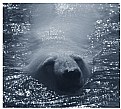
Chris Goodman
(K=1078) - Comment Date 3/31/2004
|
I use 2 pieces of black foamboard. Under exposing 1 stop(EV-1) will help keep the background black too. If you don't get a consistant black background, you can always burn in those areas in PS.
When I do macros, I use aperture priority and use the widest aperture. Sometimes I even let the camera set both for me( I have a closeup program mode on my N90s)
|
|
|
|

Mark Peterson
(K=3452) - Comment Date 3/31/2004
|
At a fabric store you can buy black velveteen or what they call "flock". This material is usually about 48-60" wide and you can get it in whatever length you want. It works well because the velvet side absorbs the light making it come out black.
|
|
|
|

Steve Kaufman
(K=2748) - Comment Date 4/1/2004
|
First, it depends on what film you are using. Slide films typically have less exposure latitude than print films, and digital cameras, should that be your medium, also have more latitude than slide films. Using slide film, if your flower is in bright light, and the background is in shade, you will basically have a black background. You can accomplish this simply by creating shade behind your flower. You can use a rock, piece of paper, or your body to create the shade you need. If you use a flash, and place it so that it only lights the flower and not the background, you will also achieve the same effect.
|
|
|
|

Mehmood Lodhi
(K=20) - Comment Date 4/12/2004
|
I use my writing pad which have a black leather surface, else i am thiking to use black silk and velvet cloth.
|
|
|
|

Danijel Micka
(K=2532) - Comment Date 4/26/2004
|
I simple just turn off the lights in the room in which I take photos. Then put light source near the subject and with F8 playing with light and exposition. I just bought 500W reflector for external wall mounting for buildings :-)
Regards,
Danijel
|
|
|
|

Rich Swanner
(K=-3732) - Comment Date 1/2/2005
|
This high-tech way of using a black background needs a lot of explaination. Get a black Hard Rock Las Vegas Hotel shirt and make sure there is no stray hair on it. That is the hardest part. The easy part is to use the back rather than the front with the logo. Good Luck!
|
|

|
|

Joe Johnson
 (K=8529) - Comment Date 4/17/2005
(K=8529) - Comment Date 4/17/2005
|
Danijel - been doing much the same in my, Glass, gallery. It's a lot of fun, with a lot of possibilities that are suggested when one gets further into it.
|
|
|
|

Joe Johnson
 (K=8529) - Comment Date 4/17/2005
(K=8529) - Comment Date 4/17/2005
|
Chris Goodman - do you still use the N90s/F90x? I was thinking of getting one, myself, if just for long 'moon-exposures' measured in minutes, or hours (with a 13stop ND, or whatever it takes). But I read that some complain that without the right back, the N90s won't shoot multiple exposures, which seems a strange design. Others describe the camera as focusing faster than you could manually, and being 'built like a tank'.
|
|
|
|

Deb Mayes
(K=19605) - Comment Date 4/17/2005
|
Funny, accurate, and a wonderful excuse to go to Las Vegas. ;) Excellent, monterey!
|
|
|
|

John Test
(K=1956) - Comment Date 6/3/2005
|
i use either black cloth or construction paper
|
|
|
|

Peter Daniel
(K=33866) - Comment Date 6/20/2005
|
You will have a black background if the background is further from the subject than your flash is from the subject. Dark backgrounds are due to light fall off, which can be easily explained by the Inverse Square Law, which states that as you double the distance from a light source you quarter the quantity of light. This is especially important with macro subjects where your working distance is short and even a comparatively small linear distance may double or even triple the flash to subject distance.
Using TTL flash and ignoring the ambient light will result in properly exposed subject and a black background.
Example: http://www.usefilm.com/image/513448.html
If you still need to get an artificial background:
Well, you don't need anything fancy (or exotic, or expensive) to get nice black background. A plain (even if it is a bit worn) black T-shirt makes for an excellent black background if used properly. The trick is that you must not have any direct light falling onto the background, and the light that is falling on the background should be as flat and soft as possible. This way, textures on the fabric will not be visible. Another thing that helps is to have your T-shirt (or whatever you used as background) as much out of the focus as possible. The Background (very very dark blue T-shirt) was at least 50cm behind the flowers, so it was nicely out of focus.
example:http://www.usefilm.com/image/520421.html
http://www.usefilm.com/image/519642.html
These examples I used my Black Suit jacket (wife was upset)
http://www.usefilm.com/image/518695.html
This example you can see abit of the fabric of the jacket...
http://www.usefilm.com/image/566952.html
This example I used Black Gym Shorts (wife ok now)
Also you can acheive a black background with SW.
I used PSP....
Example:http://www.usefilm.com/image/702483.html
On most of my postings I've included the improtant EXIF settings....
I hope this helps....
Peter Daniel
|
|
|
|
















